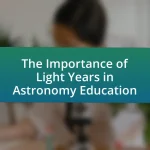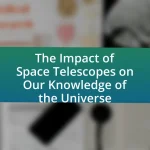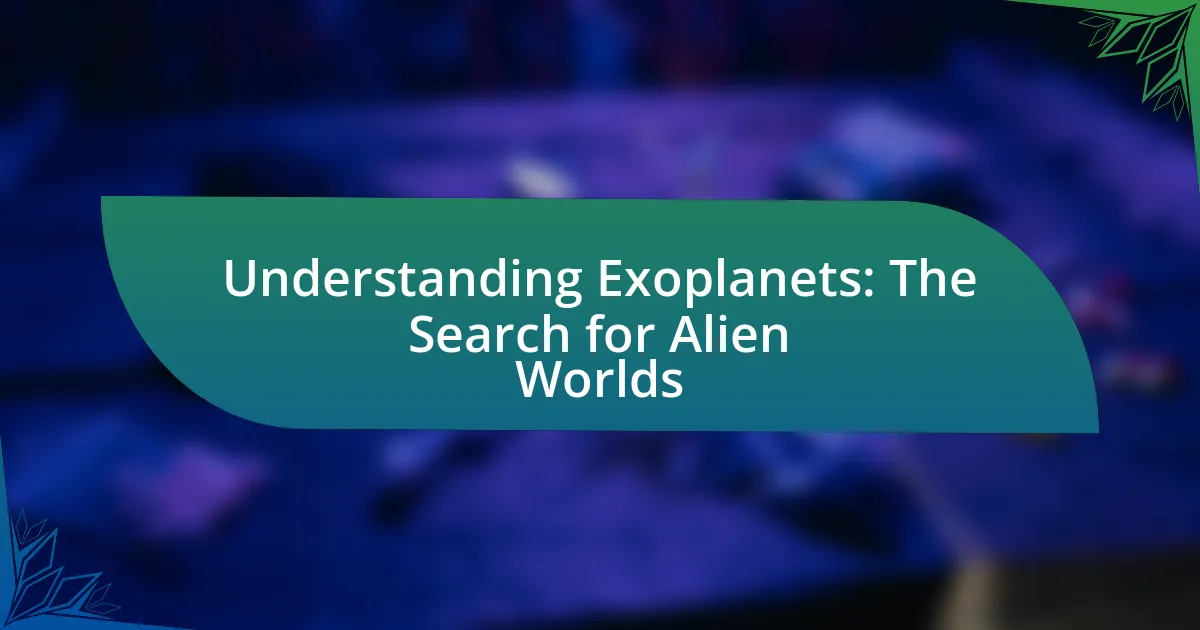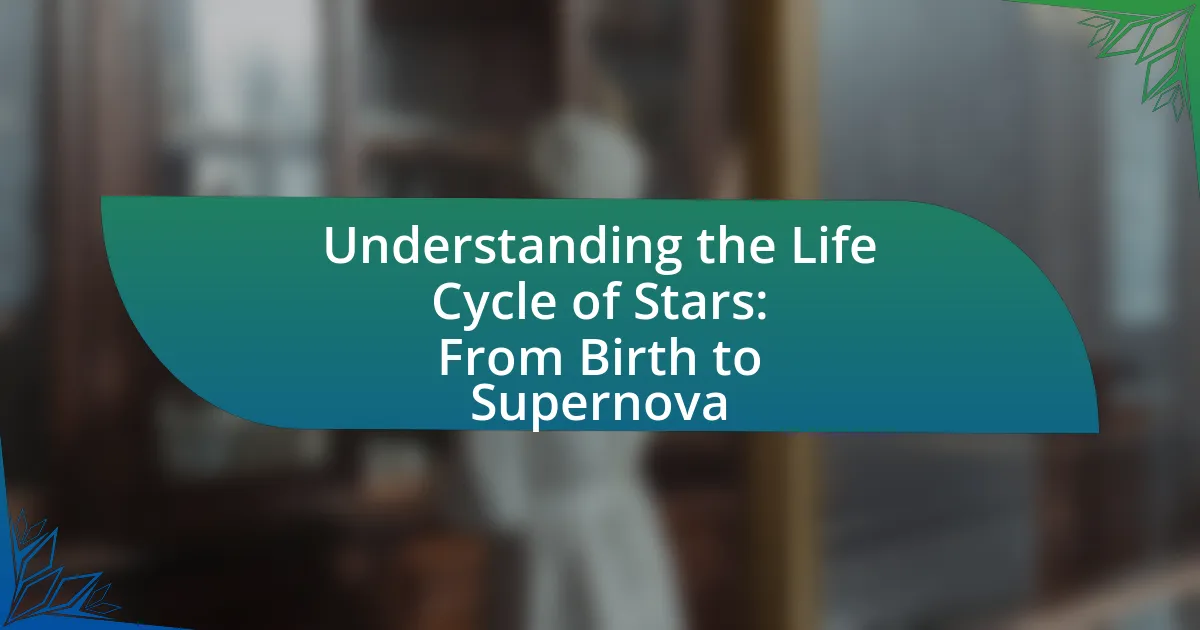Multimessenger astronomy is a field that studies astronomical phenomena through various signals, including electromagnetic radiation, gravitational waves, neutrinos, and cosmic rays. This approach enhances our understanding of cosmic events by integrating diverse data types, allowing for a more comprehensive analysis of phenomena such as black hole mergers and neutron star collisions. The article outlines how multimessenger astronomy differs from traditional methods, the significance of studying multiple messengers, and its implications for theoretical models of the universe. It also discusses key discoveries made through this approach, the challenges faced, and the future prospects for advancements in technology and international collaboration in the field.

What is Multimessenger Astronomy?
Multimessenger astronomy is the study of astronomical phenomena through multiple types of signals, including electromagnetic radiation, gravitational waves, neutrinos, and cosmic rays. This approach allows scientists to gain a more comprehensive understanding of cosmic events, as different messengers provide unique information about the same source. For example, the detection of gravitational waves from merging black holes, combined with electromagnetic observations, has led to significant insights into the nature of these events and their implications for the universe.
How does Multimessenger Astronomy differ from traditional astronomy?
Multimessenger Astronomy differs from traditional astronomy by utilizing multiple types of signals, such as electromagnetic waves, neutrinos, and gravitational waves, to study cosmic events. Traditional astronomy primarily relies on electromagnetic radiation, including visible light, radio waves, and X-rays, to gather information about celestial objects. The integration of diverse messengers in Multimessenger Astronomy allows for a more comprehensive understanding of phenomena like black hole mergers and neutron star collisions, as evidenced by the detection of gravitational waves from the LIGO observatory in 2015, which provided insights that electromagnetic observations alone could not achieve.
What are the various messengers used in Multimessenger Astronomy?
The various messengers used in Multimessenger Astronomy include electromagnetic radiation, neutrinos, cosmic rays, and gravitational waves. Electromagnetic radiation encompasses a wide range of wavelengths, such as gamma rays, X-rays, ultraviolet, visible light, infrared, and radio waves, allowing astronomers to observe different cosmic phenomena. Neutrinos are nearly massless particles that can escape dense astrophysical environments, providing insights into processes like supernovae and black hole formation. Cosmic rays, which are high-energy particles originating from various astrophysical sources, contribute to our understanding of high-energy astrophysics. Gravitational waves, ripples in spacetime caused by massive accelerating objects, were first detected in 2015, marking a significant advancement in observational astronomy. Each of these messengers plays a crucial role in piecing together the complex puzzle of the universe’s workings.
Why is it important to study multiple types of messengers?
Studying multiple types of messengers is crucial because it provides a comprehensive understanding of astronomical phenomena. Different messengers, such as electromagnetic waves, gravitational waves, and neutrinos, offer unique insights into the universe’s processes. For instance, gravitational waves can reveal information about black hole mergers, while electromagnetic signals can provide context about the same events, such as the light emitted during the collision. This multimessenger approach enhances the accuracy of scientific models and leads to more robust discoveries, as evidenced by the observation of the neutron star merger GW170817, which was detected through gravitational waves and followed by electromagnetic observations, confirming the production of heavy elements like gold.
What role does Multimessenger Astronomy play in modern astrophysics?
Multimessenger Astronomy plays a crucial role in modern astrophysics by enabling the simultaneous observation of cosmic events through multiple types of signals, such as electromagnetic radiation, gravitational waves, and neutrinos. This approach enhances our understanding of phenomena like black hole mergers and neutron star collisions, as evidenced by the detection of gravitational waves from the merger of two black holes by LIGO in 2015, which was later confirmed through electromagnetic observations. By integrating data from various messengers, astrophysicists can construct a more comprehensive picture of the universe, leading to breakthroughs in understanding fundamental questions about the nature of matter, energy, and the origins of cosmic events.
How does it enhance our understanding of cosmic events?
Multimessenger astronomy enhances our understanding of cosmic events by integrating information from various cosmic signals, such as electromagnetic waves, gravitational waves, and neutrinos. This comprehensive approach allows scientists to observe and analyze phenomena like black hole mergers and supernovae from multiple perspectives, leading to a more complete picture of these events. For instance, the detection of gravitational waves from the merger of two neutron stars, combined with electromagnetic observations, provided insights into the origins of heavy elements like gold and platinum, demonstrating how different messengers can reveal unique aspects of cosmic processes.
What are the implications for theoretical models of the universe?
The implications for theoretical models of the universe are significant, as multimessenger astronomy provides new data that can validate or challenge existing theories. For instance, the detection of gravitational waves from colliding neutron stars has confirmed aspects of general relativity and provided insights into the formation of heavy elements, which were previously theoretical. This integration of information from various cosmic messengers—such as electromagnetic radiation, neutrinos, and gravitational waves—enhances our understanding of cosmic events and the fundamental laws governing the universe. Consequently, theoretical models must adapt to incorporate these findings, leading to more comprehensive frameworks that explain phenomena like dark matter and dark energy.
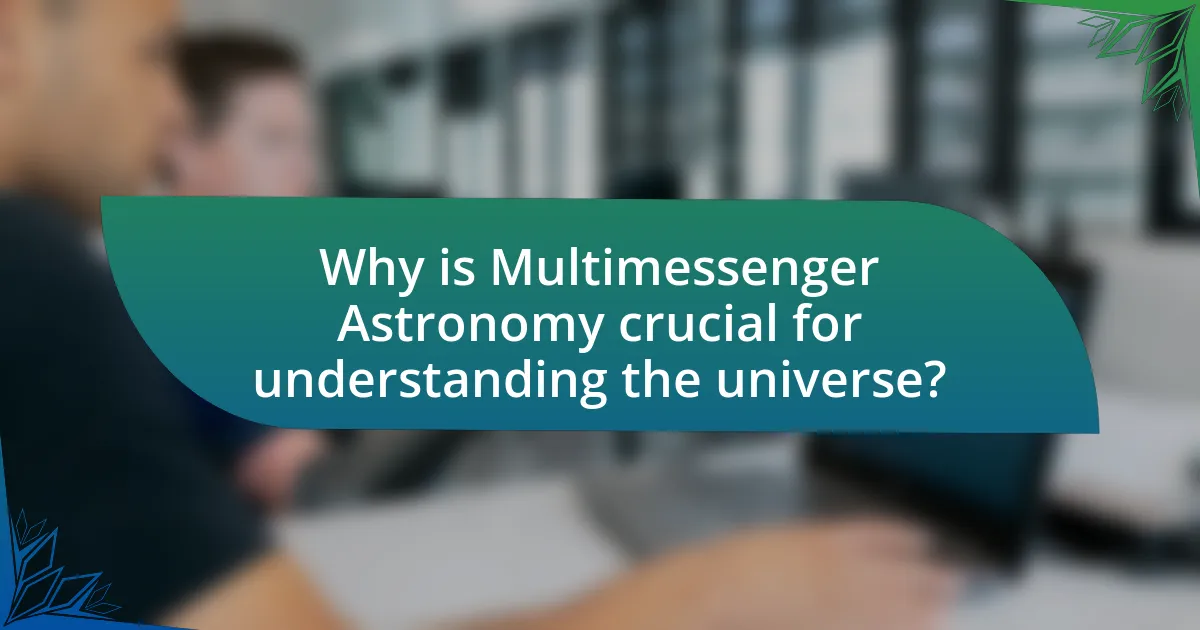
Why is Multimessenger Astronomy crucial for understanding the universe?
Multimessenger Astronomy is crucial for understanding the universe because it allows scientists to gather information from various cosmic messengers, including electromagnetic waves, neutrinos, and gravitational waves. This comprehensive approach enhances our understanding of astronomical events, such as supernovae and black hole mergers, by providing a more complete picture than any single type of observation could offer. For instance, the detection of gravitational waves from the merger of two neutron stars in 2017, combined with electromagnetic observations, led to significant insights about the origin of heavy elements like gold and platinum. This synergy between different types of data enables researchers to test theories of fundamental physics and cosmology more effectively, ultimately deepening our knowledge of the universe’s structure and evolution.
What discoveries have been made through Multimessenger Astronomy?
Multimessenger Astronomy has led to significant discoveries, including the detection of gravitational waves from colliding black holes and neutron stars, which confirmed predictions made by Einstein’s General Theory of Relativity. The first detection of gravitational waves by the LIGO observatory in 2015 marked a groundbreaking moment, revealing the existence of binary black hole mergers. Additionally, the observation of a neutron star merger in 2017 provided insights into the origins of heavy elements like gold and platinum, as well as the associated gamma-ray bursts. These findings demonstrate the power of combining electromagnetic signals with gravitational waves and neutrinos to enhance our understanding of cosmic events and the fundamental laws of physics.
How has it contributed to our knowledge of black holes and neutron stars?
Multimessenger astronomy has significantly enhanced our understanding of black holes and neutron stars by providing complementary data from gravitational waves, electromagnetic signals, and neutrinos. For instance, the detection of gravitational waves from the merger of two neutron stars by LIGO and Virgo in 2017 not only confirmed the existence of kilonovae but also allowed scientists to study the properties of neutron stars and the formation of heavy elements. This event, known as GW170817, provided concrete evidence that neutron star mergers are a source of gamma-ray bursts and heavy elements like gold and platinum, thereby linking these cosmic phenomena directly to the behavior of neutron stars. Additionally, the simultaneous observation of electromagnetic radiation from the same event offered insights into the dynamics of such mergers, further solidifying the role of multimessenger approaches in advancing our knowledge of these extreme astrophysical objects.
What are the key events that have been observed using this approach?
Key events observed using multimessenger astronomy include the detection of gravitational waves from the merger of black holes, first observed by LIGO in 2015, and the observation of the neutron star merger GW170817 in 2017, which was detected through gravitational waves and electromagnetic signals. These events provided critical insights into the nature of black holes, the formation of heavy elements, and the behavior of matter under extreme conditions. The combination of different types of signals has enhanced our understanding of cosmic phenomena and validated theoretical models in astrophysics.
How does Multimessenger Astronomy improve our understanding of dark matter and dark energy?
Multimessenger Astronomy enhances our understanding of dark matter and dark energy by integrating data from various cosmic messengers, such as electromagnetic radiation, neutrinos, and gravitational waves. This approach allows scientists to cross-verify observations and gain a more comprehensive view of cosmic phenomena. For instance, the detection of gravitational waves from colliding neutron stars has provided insights into the distribution of dark matter in galaxies, while high-energy neutrinos from cosmic events can indicate the presence of dark matter interactions. Furthermore, the combination of these data types helps refine models of dark energy by correlating cosmic expansion rates with the distribution of matter in the universe, as evidenced by studies like the one conducted by the IceCube Neutrino Observatory, which links neutrino emissions to astrophysical sources influenced by dark matter.
What evidence supports the existence of dark matter and dark energy?
The existence of dark matter is supported by gravitational effects observed in galaxy clusters, such as the Bullet Cluster, where visible matter does not account for the total mass inferred from gravitational lensing. Dark energy is evidenced by the accelerated expansion of the universe, as demonstrated by observations of distant supernovae, which show that the universe’s expansion rate is increasing. These findings are corroborated by measurements of the cosmic microwave background radiation, which indicate a universe composed of approximately 27% dark matter and 68% dark energy, as detailed in the Planck satellite data.
How can multimessenger observations provide insights into these phenomena?
Multimessenger observations provide insights into astronomical phenomena by combining data from various cosmic messengers, such as electromagnetic waves, neutrinos, and gravitational waves. This approach allows scientists to obtain a more comprehensive understanding of events like supernovae, black hole mergers, and gamma-ray bursts. For instance, the detection of gravitational waves from the merger of two neutron stars, combined with electromagnetic observations, revealed the production of heavy elements like gold and platinum, demonstrating how multimessenger data can elucidate the processes occurring in the universe.

What are the challenges and future prospects of Multimessenger Astronomy?
The challenges of Multimessenger Astronomy include the need for advanced detection technologies, the integration of diverse data types, and the requirement for real-time data analysis to correlate signals from different messengers like gravitational waves and electromagnetic radiation. For instance, the detection of high-energy neutrinos and their association with gamma-ray bursts requires sophisticated instruments and collaborative efforts across multiple observatories, which can be logistically complex and costly.
Future prospects for Multimessenger Astronomy are promising, as advancements in technology, such as improved telescopes and data processing algorithms, will enhance the ability to detect and analyze signals from cosmic events. The establishment of networks like the Einstein Telescope and the Cherenkov Telescope Array aims to facilitate better coordination and data sharing among researchers, potentially leading to groundbreaking discoveries about phenomena such as black hole mergers and neutron star collisions. These developments indicate a trajectory toward a more comprehensive understanding of the universe through the synergy of multiple observational methods.
What technological advancements are needed for future discoveries?
Future discoveries in multimessenger astronomy require advancements in detector sensitivity, data processing capabilities, and communication technologies. Enhanced detector sensitivity is crucial for capturing faint signals from gravitational waves and neutrinos, which are essential for understanding cosmic events. For instance, the upgrade of LIGO and Virgo detectors has already improved sensitivity, allowing for the detection of more events. Additionally, advancements in data processing, such as machine learning algorithms, are necessary to analyze the vast amounts of data generated by these observations efficiently. Finally, improved communication technologies will facilitate real-time sharing of data across global observatories, enabling collaborative efforts in identifying and studying astronomical phenomena. These advancements collectively support the goal of a more comprehensive understanding of the universe through multimessenger approaches.
How can improved detectors enhance our observational capabilities?
Improved detectors enhance our observational capabilities by increasing sensitivity and resolution, allowing for the detection of fainter signals and finer details in astronomical phenomena. For instance, advancements in photon-counting detectors have enabled the observation of distant celestial objects that were previously undetectable, thereby expanding our understanding of the universe. Additionally, enhanced detectors can operate across a broader range of wavelengths, facilitating multimessenger astronomy, which combines data from electromagnetic signals, gravitational waves, and neutrinos. This integration provides a more comprehensive view of cosmic events, such as supernovae and black hole mergers, ultimately leading to deeper insights into the fundamental processes governing the universe.
What role does international collaboration play in advancing this field?
International collaboration is essential in advancing multimessenger astronomy by pooling resources, expertise, and data from diverse institutions worldwide. This collaborative approach enables the integration of various observational techniques, such as gravitational waves and electromagnetic signals, leading to more comprehensive understanding of cosmic events. For instance, the joint efforts of the LIGO and Virgo collaborations in detecting gravitational waves have significantly enhanced the field, demonstrating how shared knowledge and technology can accelerate discoveries. Furthermore, international partnerships facilitate large-scale projects, like the Event Horizon Telescope, which requires coordination among multiple countries to achieve groundbreaking results in imaging black holes.
What are the best practices for engaging with Multimessenger Astronomy?
The best practices for engaging with Multimessenger Astronomy include collaboration across disciplines, utilizing advanced data analysis techniques, and fostering open communication among researchers. Collaboration is essential as it combines expertise from various fields such as astrophysics, particle physics, and astronomy, enhancing the understanding of cosmic events. Advanced data analysis techniques, including machine learning and statistical methods, are crucial for interpreting the vast amounts of data generated by multimessenger observations, such as gravitational waves and electromagnetic signals. Open communication among researchers facilitates the sharing of findings and methodologies, which accelerates discoveries and promotes a comprehensive understanding of the universe. These practices are supported by successful initiatives like the LIGO-Virgo collaboration, which has effectively integrated diverse scientific communities to advance the field.
How can researchers effectively share their findings with the public?
Researchers can effectively share their findings with the public by utilizing accessible communication methods such as social media, public lectures, and engaging visual content. These platforms allow researchers to present complex scientific concepts in a simplified manner, making them more relatable to a general audience. For instance, studies show that visual aids can enhance understanding by up to 400%, as they help convey information quickly and clearly. Additionally, researchers can collaborate with science communicators to craft narratives that resonate with the public, ensuring that the significance of their findings in multimessenger astronomy is well understood.
What resources are available for those interested in learning more?
For those interested in learning more about the importance of multimessenger astronomy in understanding the universe, several resources are available. Key resources include academic journals such as “The Astrophysical Journal” and “Nature Astronomy,” which publish peer-reviewed research on multimessenger observations. Additionally, organizations like the National Aeronautics and Space Administration (NASA) and the European Space Agency (ESA) provide educational materials and updates on ongoing multimessenger projects. Online platforms such as Coursera and edX offer courses on astrophysics and multimessenger astronomy, enabling learners to gain structured knowledge. Furthermore, conferences like the “International Conference on Multimessenger Astronomy” facilitate networking and knowledge sharing among researchers and enthusiasts. These resources collectively enhance understanding and engagement with the field of multimessenger astronomy.

